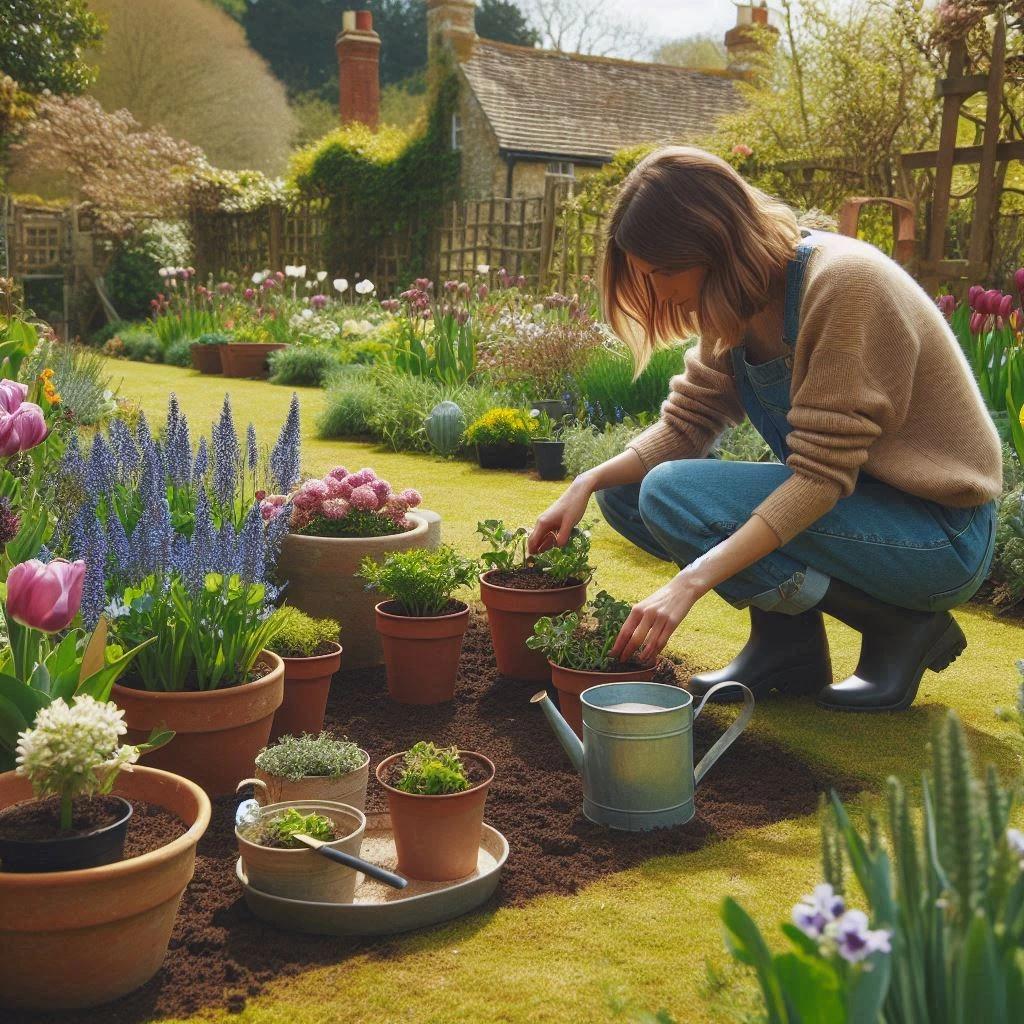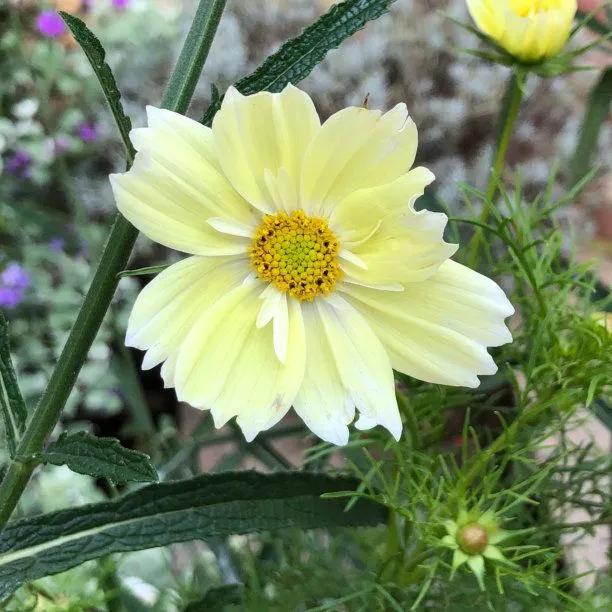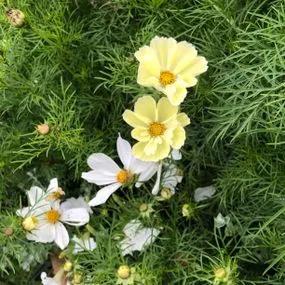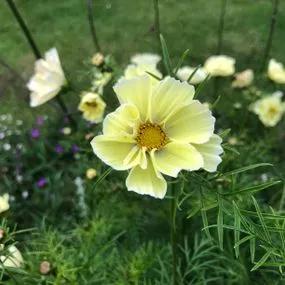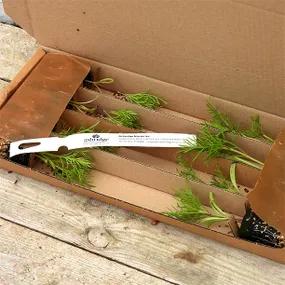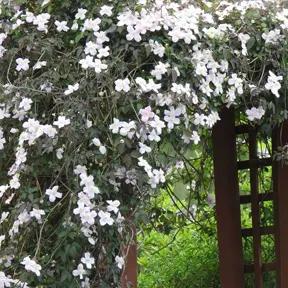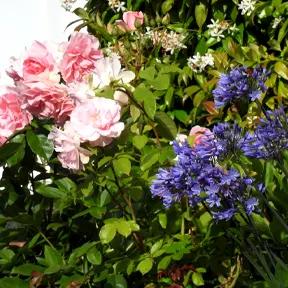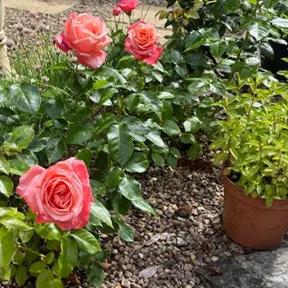Xanthos Cosmos Seedling Plants
- Half-hardy annual
- Colour: pale yellow
- Height: 60cm
- Planting Months: May to July
- Flowering: June to November
- Plant Spacing: 30cm
- Foliage: finely cut
Recommended extras
Description
Cosmos Xanthos
Xanthos really is a one-off. Until recently, cosmos just came in shades of white and pink. Lovely as these traditional colours are (and there are plenty more Cosmos to choose from), it's fabulous to welcome this pale yellow variety to the gang. Yes, there have been yellow cosmos before, but, until now, none that performed as well as the pinks and whites. In fact, some say that Xanthos actually flowers a little earlier than the others, kicking off in May rather than June. Given its virtues, Xanthos has caused quite a stir among horticulturists and gardeners and has won some awards since its introduction in 2015. It's a compact variety, too, growing to about 60 cm so it won't flop and need staking. The petals are a delicious shade of soft butter yellow around a golden eye, fading softly towards the tips. Like all cosmos, the large, open flowers are hugely popular with bees and other pollinators. And again, like all cosmos, the more you deadhead, the greater its rewards, flowering on and on until the first frosts.
Cream of the crop
Because it is a little shorter and more compact than a lot of the other cosmos varieties, it's best in the middle of a border, always in a sunny spot. Combine its creamy yellow flowers in drifts with a contrasting rich claret variety of cosmos such as Dazzler and/or spikes of purple/red penstemons ('Garnet' or 'Raven' would look amazing) for a heavenly planting combination. It's great in a container, too, perhaps in combination with spikes of midnight blue Salvia nemorosa 'Caradonna' (the pale yellow/deep blue combination is always a winner).
Cosmos Xanthos Facts
- Half-hardy annual
- Colour: pale lemon sherbet yellow
- Height: 60cm
- Planting Months: April to June/July
- Flowering: May to October
- Plant Spacing: 30cm
- Foliage: finely cut
All Greek…
The word Xanthos means golden, fair or yellow. It's used as a boys' name in Greek-speaking countries, the female form being Xanthe.
Planting Instructions
Plant Cosmos Xanthos in well prepared, moist soil that ideally was enriched with a little organic matter the previous autumn. Not too much as Cosmos flower better if the soil is not overly rich. Water well after planting and for at least a week after that just to make sure they establish well.
Cosmos also grow very well in containers but remember that they can reach 100 cms in ideal conditions so we would suggest using pot sizes of at least 5 Litres and preferably a bit more. Any general purpose compost will do here.
The main requirements are that your plants have enough light and water - they grow very fast and flower hugely through summer so moisture is important. They can cope with a little shade but flower better in full sun. In general, they need an absolute minimum of 4 hours direct light a day, but 6-8 hours would be better.
Because you are buying seedlings, you can plant your cosmos into their final flowering positions immediately. Space your plants 35-50 cm apart and (in a bed) plant them in drifts of rather than singly. They will either need a 90 cms cane per plant (which should be pushed in about 30 cms deep and about 5 cm from a plant) or a support made of twine or pea/bean netting. This should be stretched between canes about 40 cms above ground level and the cosmos can then grow through it. It is not pretty at first but the plants disguise it very quickly and it is an effective solution (if you are anti-plastic, you can also make a cat's cradle of twine between canes around the outside of the planting). Just don't plant a group that is so big you can't reach the middle...
As flowers develop cut them or dead head when they are over and your cosmos will carry on flowering all summer long. A well-grown plant can quite literally produce a hundred flowers or so in a season.
To maintain flower quality and size, you can use a high potash and phosphate fertiliser every fortnight throughout summer Home-made comfrey tea is perfect or one of the specialised tomato fertilisers will do very well.
It's Summer Planting Season 2025

Pot Grown & Plug Plants Delivered

Direct from the Nursery Value

No more broken plants in the post!
